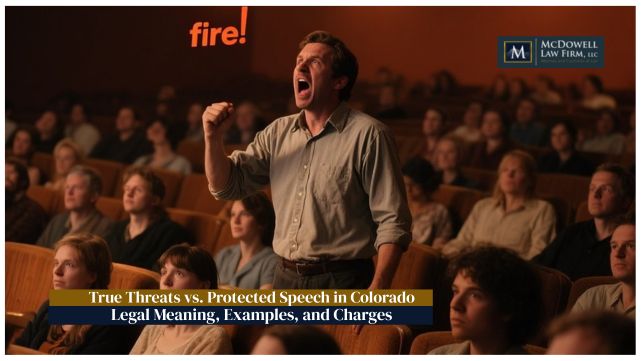In the world of criminal defense, truth can be stranger than fiction. Over the years, defense attorneys have advanced some truly bizarre and strange legal cases as defense strategies – and against all odds, a few have actually succeeded. From junk food inducing a murderous mood swing to mistaken identity caused by identical twins, these real court cases from the U.S. and abroad show that an unconventional defense can sometimes lead to a not guilty verdict or a case dismissal.
In this article, we’ll explore several real-life cases where unusual defenses worked, touching on criminal defense tactics that left judges and juries astonished. Buckle up for a wild ride through some of the strangest (yet successful) legal defenses in history.
What is The Twinkie Defense? (1979)
Perhaps the most famously strange defense in American courtrooms is the so-called “Twinkie defense.” This term arose from the 1979 trial of Dan White, who was charged with the double murder of San Francisco Mayor George Moscone and City Supervisor Harvey Milk. White’s lawyers didn’t claim he was innocent, but argued diminished capacity – essentially that he was not in his right mind due to severe depression. As a curious supporting detail, a psychiatrist testified that White had abandoned his healthy diet for a binge on sugary junk food in the lead-up to the crime.
The media seized on that detail and dubbed it the “Twinkie defense,” implying White’s consumption of sweets (like Twinkies) contributed to an altered mental state. The gambit paid off: White was convicted of voluntary manslaughter instead of murder, sparking public outrage. While junk food wasn’t a formal legal excuse, this creative strategy helped reduce White’s culpability in the jury’s eyes. Ever since, “Twinkie defense” has become shorthand for any implausible-seeming legal defense strategy blaming some external factor (from snacks to cough syrup) for criminal behavior.
The Sleepwalking Killer Acquitted (1987)
Can someone literally sleepwalk through a crime? In an astonishing Canadian case, the answer was yes. In 1987, 23-year-old Kenneth Parks drove about 14 miles to his in-laws’ home, attacked his father-in-law, and fatally bludgeoned his mother-in-law – all allegedly while asleep. Parks had a history of sleep disorders, and after the incident he showed up at a police station bloodied and bewildered, claiming he had no memory of the rampage.
At trial, his defense attorney argued that Parks was sleepwalking (a condition known as homicidal somnambulism) and thus lacked any intent or awareness during the killing. It sounded far-fetched – even the prosecutor called the defense “ludicrous” – but expert psychiatric evidence backed the claim.
In a stunning verdict, a Toronto jury found Parks not guilty of murder, accepting that he was essentially an automaton acting unconsciously. The judge and jurors were convinced that in this bizarre sleep state, there was “no will or conscious mind” directing his actions. The case made headlines worldwide, becoming one of the most famous instances of the “sleepwalking defense” in criminal law. (Notably, Parks’s remaining charge for attacking his father-in-law had to be handled separately, since the court had legally declared he was asleep during the first attack!) This case highlights how criminal defense attorneys sometimes turn to cutting-edge medical science to explain otherwise inexplicable behavior.
Mistaken Identity and the Identical Twin Mix-Up (2009)
Identical twins share the same DNA – a fact that can throw a wrench into criminal prosecutions. An extraordinary case in Malaysia showed how a mistaken identity defense can lead to freedom. In 2003, police in Kuala Lumpur arrested a man (one of a pair of twin brothers) after finding 166 kg of cannabis and 1.7 kg of opium in his car. Shortly after, his identical twin brother arrived at the scene and was also arrested.
This set the stage for a courtroom conundrum: by the time the drug trafficking case went to trial (in 2009), authorities could no longer be sure which twin had actually been caught with the drugs. Both men looked alike, and even sophisticated DNA evidence couldn’t tell the twins apart because their genetic profiles were practically identical.
Faced with the possibility of sentencing the wrong man to Malaysia’s mandatory death penalty for drug trafficking, the judge refused to proceed. “I can’t be calling the wrong twin to enter his defence. I can’t be sending the wrong person to the gallows,” the judge explained, as she acquitted the pair. The twins reportedly burst into tears of relief in the courtroom. This real court case shows a legal defense strategy of sorts that doesn’t involve any clever argument by an attorney – just the sheer luck (or misfortune) of having an identical double.
Similar twin mix-up defenses have occurred elsewhere (including a famous 2009 jewelry heist in Berlin where DNA from a glove matched two twins, forcing both suspects to be released). These cases underline how reasonable doubt can skyrocket when science can’t pinpoint a culprit beyond twin-related confusion.
The “Affluenza” Teen Defense (2013)
When 16-year-old Ethan Couch faced charges for a deadly drunk-driving crash in Texas, his defense team took an unorthodox route: they claimed he was a victim of “affluenza.” This term – a portmanteau of affluent and influenza – describes a supposed condition in which being too wealthy and spoiled impairs one’s ability to tell right from wrong.
In the 2013 case, Couch had driven while heavily intoxicated (three times the legal alcohol limit) and caused a crash that killed four people. Most expected him to face serious prison time. Instead, at trial his lawyers argued that Couch’s privileged, coddled upbringing had left him irresponsible and unable to grasp the consequences of his actions. To the shock of victims’ families, the court found this argument persuasive enough to warrant leniency. The teen was convicted on multiple counts – but the judge bypassed the prosecution’s call for a 20-year prison sentence, and gave Couch probation and rehab treatment instead.
The so-called “affluenza defense” spared him from prison. The case ignited a media firestorm and public debate about accountability and equal justice. While affluenza isn’t a formally recognized medical condition, this creative criminal defense strategy helped a defendant avoid jail, illustrating how framing a defendant’s background and psyche can influence sentencing. (Of course, the saga didn’t end happily for Couch – he later violated probation and ended up in jail for a time – but the precedent of the affluenza defense was firmly established.)
Sexsomnia: When Sleep Turns Criminal (2005)
We’ve seen sleepwalking used as a defense in a violent crime, but what about sexual assault? In another strange Canadian case, a man successfully argued that he suffered from “sexsomnia,” a rare form of sleepwalking where one engages in sexual acts while asleep.
Jan Luedecke attended a house party in Toronto in 2003. After a night of heavy drinking and even taking psychedelic mushrooms, he fell asleep. A woman at the party awoke to find Luedecke sexually assaulting her. He stopped only after being startled awake, allegedly with no memory of his actions. At trial, Luedecke’s attorney presented expert testimony that he had a long history of sleep disorders – in fact, several ex-girlfriends attested that he sometimes initiated sexual acts in his sleep. In 2005, the judge accepted this sleep disorder defense, and Luedecke was acquitted of sexual assault on the grounds that he was essentially unconscious during the incident.
Outraged critics argued this bizarre defense stretched credulity and endangered women, and prosecutors appealed the verdict. However, Luedecke’s acquittal was upheld on appeal. The sexsomnia defense is an unusual offshoot of the sleepwalking defense, and while extremely rare, this case proved it can succeed under the right (or perhaps wrong!) circumstances. It’s a jaw-dropping example of how criminal acts sometimes intersect with uncharted medical phenomena in court.
The PMS Defense (1994)
Can natural hormonal cycles be used to excuse criminal behavior? In a notable U.K. case, a woman named Jan Painter was tried for the murder of her husband – a crime she openly admitted to committing. Her legal team, however, argued that she was suffering from severe premenstrual syndrome (PMS) which drastically affected her mental state.
Painter claimed that during “that time of the month,” her emotional volatility was so extreme that it amounted to a temporary insanity or diminished capacity. In 1994, a Liverpool jury found this explanation convincing: they acquitted Painter of murder entirely. The case made waves and “the PMS defense” entered public discourse as one of the more controversial legal defense strategies. Supporters pointed to evidence that PMS can cause mood swings, depression, even psychosis in rare instances. Skeptics, on the other hand, argued that millions experience PMS and don’t resort to violence – raising questions about personal responsibility.
In the wake of Painter’s acquittal, a few other defendants have attempted PMS-based defenses. In one U.S. example, a woman in Virginia avoided a drunk driving conviction by blaming PMS for her erratic behavior during the traffic stop. Still, such defenses remain exceedingly uncommon. The successful use of a premenstrual syndrome defense in a homicide trial shows just how far creative attorneys will go – and how a sympathetic jury might buy even a seemingly strange defense if the science and circumstances align.
“I Couldn’t Have Been Driving” – An Unconventional Alibi (1999)
Sometimes the best defense is a bold (if somewhat embarrassing) offense. Consider the case of Heather Specyalski, a Connecticut woman charged with manslaughter after a 1999 car crash that killed her boyfriend, prominent businessman Neil Esposito. Prosecutors claimed Specyalski was driving recklessly and caused the crash, but she offered a very unexpected alibi: she insisted she wasn’t even behind the wheel at the moment of impact. How? Because, according to Specyalski, she was performing oral sex on Esposito while he was driving – therefore he must have been the driver when the car lost control.
This jaw-dropping defense provoked disbelief (and more than a few snickers), but the judge allowed it to be presented, noting that a defendant has the right to offer any defense “no matter how outlandish”. The courtroom heard intimate and awkward details. Paramedics testified that they found Esposito’s body with his pants down after the accident, lending some credence to the scenario. In the end, Specyalski’s gambit paid off – the jury acquitted her of all charges related to the crash. This case, while perhaps darkly comedic, underscores a serious point: a creative criminal defense can create reasonable doubt.
By asserting an unconventional scenario (however indecent), Specyalski’s team shifted the narrative of the fatal incident and introduced just enough uncertainty to win freedom for their client. It’s not a defense you’d find in any legal textbook, but in this real court case it worked.
Conclusion
These cases prove that sometimes the most unconventional strategy can yield a victory in court. From the so-called Twinkie defense to sleepwalking killers and mistaken-identity twins, creative attorneys have pushed the envelope of legal defense strategies to secure not-guilty verdicts and case dismissals. While these defenses are outliers (and definitely not the norm in everyday criminal defense), they highlight the importance of thinking outside the box when the stakes are high.
Juries can be swayed by a surprising story, and a skilled criminal defense lawyer knows how to weave facts and theory into a compelling narrative – no matter how strange it may sound. If nothing else, these real cases make for incredible courtroom stories and remind us that in the legal world, you truly have to expect the unexpected. After all, when your freedom is on the line, even a “bizarre” defense is better than no defense at all!





